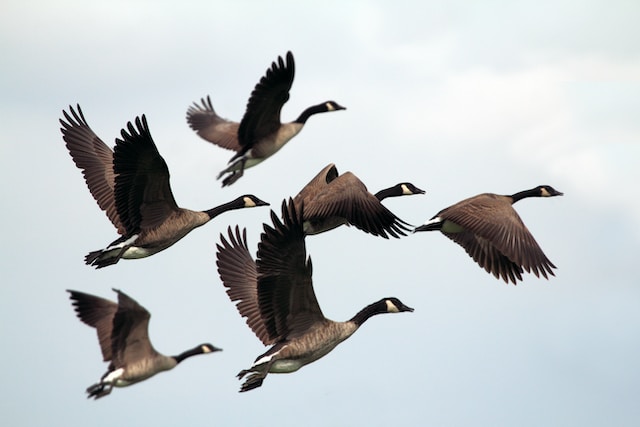From the eye of an eagle in Native American culture to a white dove symbolizing peace, birds have come to appear as powerful symbols throughout many different cultures around the world and over hundreds of years. As creatures that inhabit skies, land, rivers, and oceans, birds are believed to be hovering between our physical world and the spiritual realm — connecting us with something bigger than ourselves — which is why bird symbolism has maintained so much gravity among many ancient people.
Let’s explore how bird symbolism can tell us more about the nature of these animals beyond just an aesthetic appreciation for their beauty, delving into what they mean spiritually within various cultural contexts.
Bird Symbolism: A Quick Overview
Birds have been a symbol of freedom, wisdom, and peace across different cultures for centuries. They fly high in the sky, untethered from the ground, spreading their wings and soaring toward the heavens, making them an embodiment of freedom. Their ability to navigate through the winds and find their way back home makes them a symbol of wisdom and guidance. The peaceful cooing of a dove or the gentle rustling of feathers by an eagle’s majestic wings evokes a sense of calm and tranquility, making them an embodiment of peace. The symbolism of birds has been used in literature, art, and spirituality for centuries, and it continues to captivate our imagination and inspire us to take flight toward new horizons. Now, let’s take a closer look at some of the different meanings that birds hold in various cultures and belief systems.
Bird Symbolism in Native American Culture
Birds held a significant place in Native American culture as symbols of freedom, power, and spirituality. The eagle, for example, was revered as a sacred bird that could communicate with the spirit world. The owl, on the other hand, was seen as a messenger of death and change. Other birds like the hawk, crow, and woodpecker were also important symbols that represented different aspects of nature and life.
Native American tribes believed that each bird possessed unique characteristics and qualities that could offer guidance and enlightenment. Therefore, they incorporated bird symbolism in their art, ceremonies, and daily life to connect with the natural world and honor their ancestors. Today, bird symbols continue to hold an important place in Native American cultures and traditions as a reminder of the rich history and deep spirituality that has been passed down through generations.
Bird Symbolism in Ancient Egyptian Culture
In Ancient Egypt, birds were seen as sacred animals and symbols of divine protection, freedom, and the afterlife. The ibis, for example, was associated with Thoth, the god of wisdom, writing, and magic, and was often depicted on hieroglyphs and temple walls holding a writing instrument. The falcon, on the other hand, was associated with Horus, the god of the sky, kingship, and the hunt, and was often depicted with a solar disk or a double crown on its head. The vulture, the heron, and the hoopoe also had their own symbolic meanings and were sometimes mummified and buried along with their owners as offerings to the gods. The bird imagery and mythology of Ancient Egypt continue to fascinate and inspire people around the world.
Bird Symbolism in Celtic Culture
The ancient Celts were deeply connected to nature and the world around them, and birds held a special place in their culture. These winged creatures were seen as messengers between the spirit world and the mortal realm and were often depicted in art and mythology. The Celts believed that different types of birds represented various qualities and virtues.
The crow was associated with the goddess Morrigan and symbolized wisdom and rebirth, while the hawk was a symbol of war and protection. Birds were also believed to bring good luck and fortune and were often given as gifts to ensure prosperity and success.
Bird Symbolism in Chinese Culture
In Chinese culture, birds are frequently associated with good fortune, longevity, and happiness and have been featured in many Chinese myths and legends. The crane, in particular, is highly regarded as a symbol of longevity and is often depicted with other auspicious symbols in Chinese art and literature. Meanwhile, quail and mandarin duck have represented good fortune in love and relationships. Birds also play a significant role in Chinese New Year celebrations, with the phoenix being a common motif and symbol of renewal and rebirth.
Bird Symbolism in Hinduism
In Hinduism, birds are often associated with deities and have been mentioned in ancient scriptures as important symbols of divine power and protection. The Garuda, a mythical bird, is considered the vehicle of Lord Vishnu, one of the principal deities in Hinduism. The peacock, with its magnificent feathers, is considered a symbol of beauty, love, and reincarnation. The owl, on the other hand, is viewed as a symbol of wisdom and knowledge, often associated with the goddess of learning, Saraswati.
Through a dive into various cultures and religions, we see that bird symbolism is as diverse as the birds themselves. This testifies to the profound influence these creatures have had, stretching across continents and transcending time. In essence, birds connect us to nature, to the heavens, and the profound mysteries of life, encouraging us to soar high and explore the uncharted territories of our existence.


